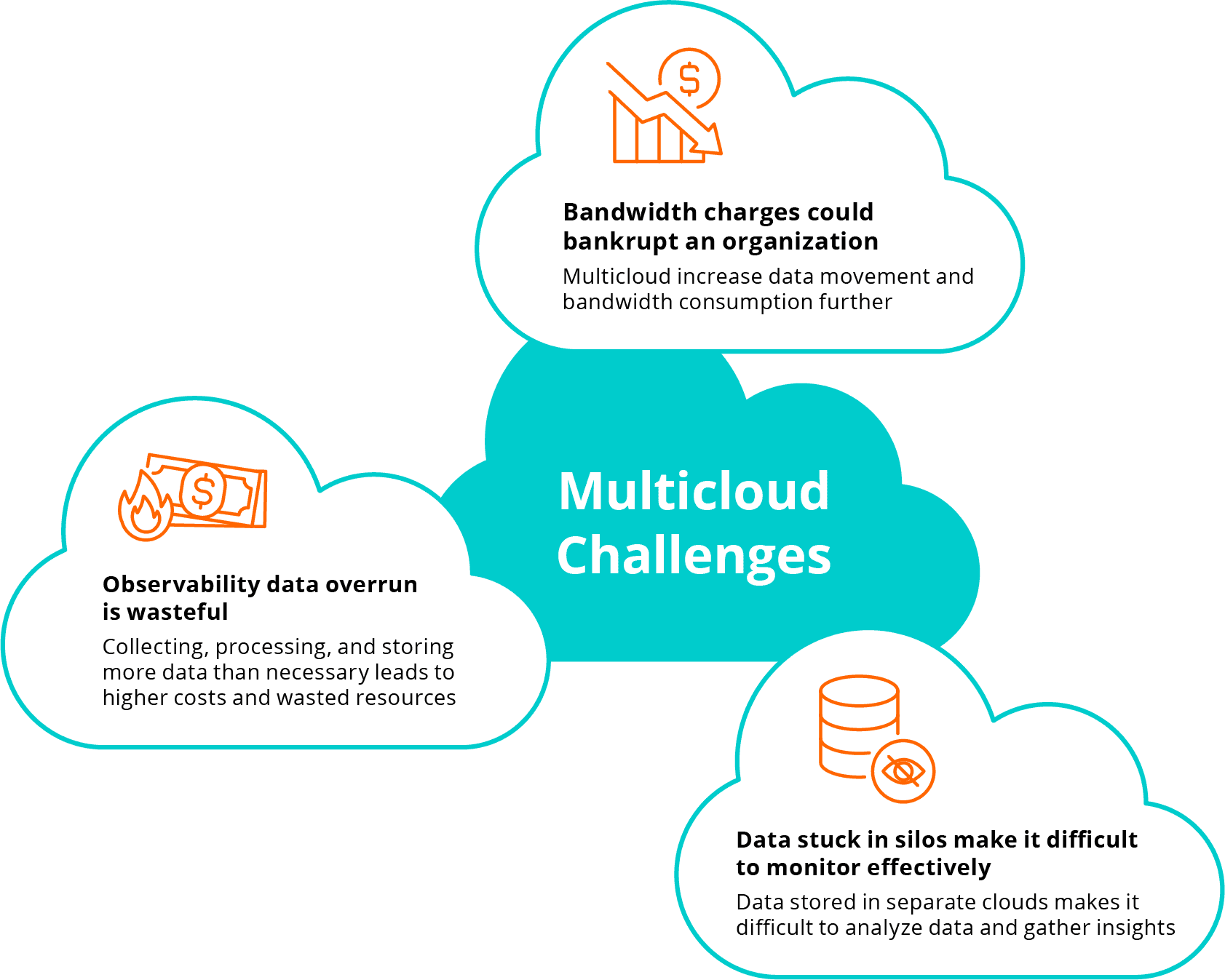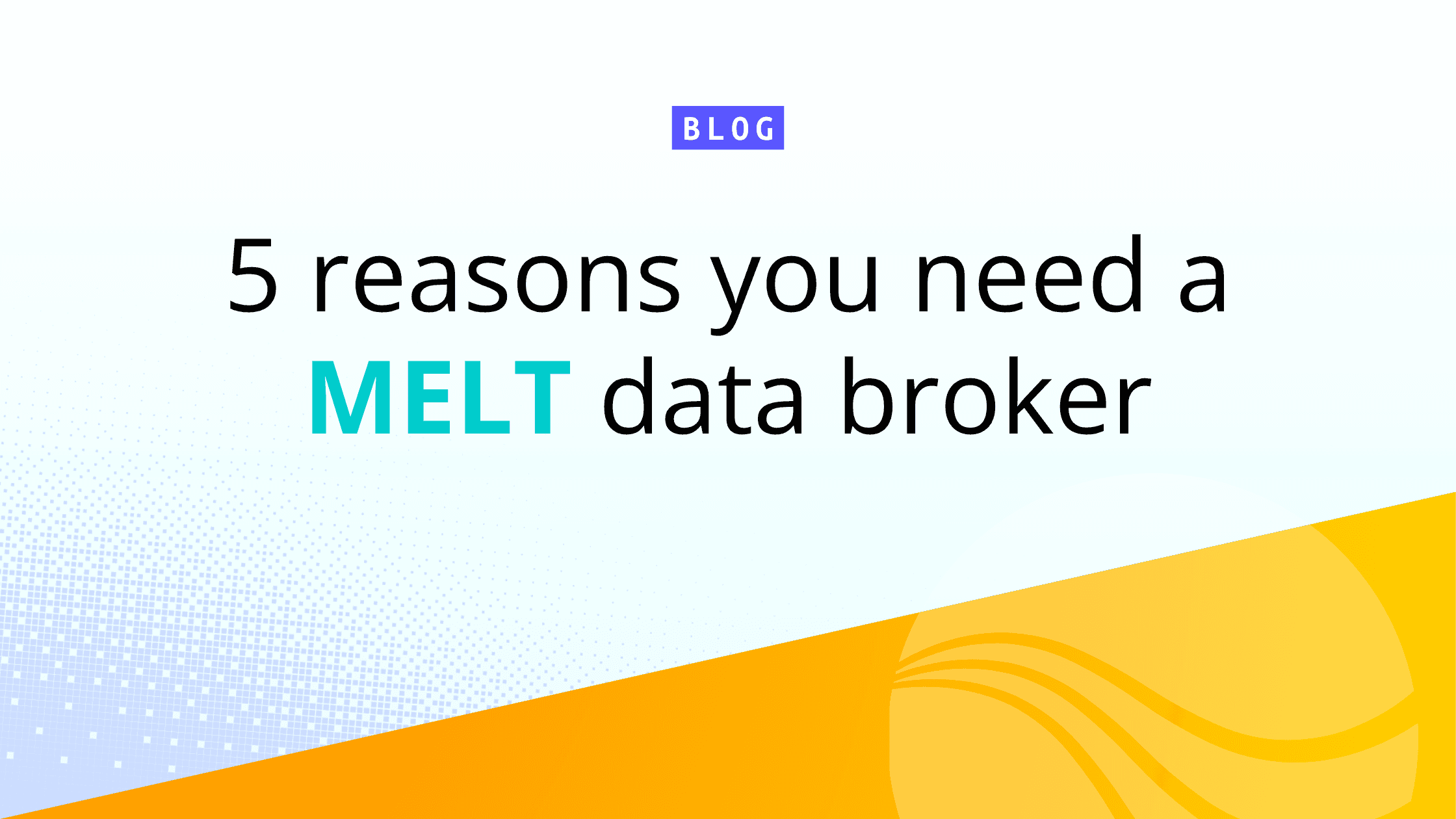IT, DevOps, and security teams are figuring out the best ways to manage their complex, ever-growing, ever-changing environments. And one contributing factor to all the complexity is the rise of using multiple cloud services. One cloud service to manage is difficult enough, but adding more to the mix — each with its own interface and set of tools — makes everyone’s job significantly more difficult.
Figuring out how to integrate the different platforms and figuring out ways to see across the entire cloud landscape is especially challenging. But using more than one cloud service is quickly becoming the norm in cloud-native and cloud-first organizations. IT leaders are seeking out the right solutions on how to best handle their new modern cloud ecosystems.
Cloud observability is one approach teams are turning to in order get a grasp of their multi-cloud management environments. Observability delivers peace of mind with complete visibility and insights into helping teams better understand what is happening, how things are running, and if everything is secure.
Let’s dive into what multi-cloud is, why it’s gaining traction, and how observability can help understand application performance and get teams the most use and value out of their data.
What Is Multi-Cloud?
Multi-cloud simply means more than one cloud. A multi-cloud environment can be made up of private, public, and hybrid clouds, and can be combined with on-premises operations along with apps and services running on various cloud providers.
Public cloud offerings include third-party cloud service providers, the most popular public clouds are Amazon Web Services (AWS), Microsoft Azure, and Google Cloud Platform (GCP), Alibaba Cloud, and Oracle Cloud. These companies manage everything from the hardware, storage, and network, which are all used and accessed by many cloud tenants through a web browser.
Private cloud means the service is solely dedicated and controlled by a single organization. That organization is responsible for maintaining infrastructure and ensuring compliance requirements are met. Private clouds offer the ability to adjust security posture to the specific needs of the business. Since fewer people have access to private clouds, data becomes less vulnerable to being compromised.
Hybrid cloud combines on-premises infrastructure with a public cloud, and allows data to move between the two. Many organizations use a hybrid cloud approach because they get the best of both worlds — keeping sensitive data secure on-premises and maximizing their existing investments while innovating fast by building newer technologies in the cloud.

Why the Shift to Multi-Cloud?
Organizations are realizing it’s risky to put all their eggs (and data!) in one basket. According to Flexera’s 2022 State of the Cloud Report, 89% of organizations have a multi-cloud strategy, with 80% taking a hybrid cloud approach.[1] And in another report by ERG, most use between 2 and 4 public clouds.[2]
The ongoing trend to adopt multi-cloud management has become more popular recently because it allows IT and engineering teams to choose the best cloud platform for each of their workloads. They’re able to take advantage of all the great features and capabilities, resiliency, performance, and price of the platform they choose. It also prevents vendor lock-in and prevents them from a situation where they’re strong-armed into paying higher costs because they’ve become vulnerable and reliant on just one cloud computing service.
Organizations may also adopt multi-cloud unintentionally. It’s not uncommon for different teams to choose which cloud provider they want to use, without running it by the larger team or getting formal approval. When this happens, IT leaders then need to figure out a proper multi-cloud strategy that will set their teams up for future success.
Challenges With Multi-Cloud
Managing a multi-cloud environment can be daunting, it requires dealing with different cloud providers each with its own set of tools and interfaces. Having to integrate and coordinate many different systems together is anything but simple.
Challenge 1: High Bandwidth Charges
Moving to the cloud came with promises of lower IT costs, and not having to pay for the underlying infrastructure. But the reality is, many organizations struggle to keep growing cloud costs down.
81% of businesses cite managing cloud spend as the top cloud challenge they face, with respondents estimating they waste 32% of their cloud spend. This will only get more difficult as cloud consumption grows.[3]
One of the greatest challenges organizations have is dedicating the time and energy to move apps and data between data centers and across multiple public cloud services.[4] Transferring data in and out of cloud accounts can quickly cause an organization to go broke. Compared to on-premises solutions, cloud services actually require more bandwidth to transfer data. More bandwidth means more costs and you can’t get around it — you have to transfer data to work in the cloud.
Challenge 2: Immense Observability Data Overrun
A vast majority of data ends up becoming unusable, and this happens for many reasons. Not only is it expensive to collect all the data that gets generated, but it’s also impractical to then move and store it all somewhere. And then there’s the need to query data so it can be searchable.
Observability data overrun occurs when organizations collect, process, and store more observability data than necessary, resulting in higher costs and wasted resources. This is often overlooked, and organizations end up paying more for observability data than their production systems. Cloud platform vendors charge by data volume, which means that observability plans may create additional egress charges from the cloud provider.
Challenge 3: Data Silos and Monitoring Woos
Data silos occur when data is stored in separate clouds that aren’t integrated. This can lead to inconsistencies in the data and also hinder teams from being able to access and use the data they need.
When data is siloed, monitoring becomes a challenge. Each cloud provider offers its own dedicated monitoring tool, but none are able to monitor across multiple clouds and services. This makes it difficult to gain a holistic view of the entire infrastructure and track performance and issues.
Without proper monitoring across cloud platforms, teams have a more difficult time collaborating with each other. This makes it significantly more difficult to detect and resolve issues and leaves them stagnant when trying to find potential areas for optimization and improvement in cloud-native environments.

4 Benefits of Multi-Cloud Observability
Behind every successful multi-cloud strategy is a strong observability strategy. Observability is a way to watch and understand the health and performance of various systems, applications, and services being used. This is especially crucial in a multi-cloud environment, where cloud resources and services are distributed across different cloud platforms and are accessed and managed through different tools and interfaces.
Observability in a multi-cloud environment can help to:
Gain Holistic Visibility of the Entire Multi-Cloud Landscape
Get panoramic views across all you data, across all your cloud providers. With this level of visibility, any team member within your organization — with the right access controls, data governance, and compliance rules in place — can view.
When teams have easy access and real-time visibility to the data they need, they’re able to streamline release cycles and optimize for better user experiences. Teams that want to move data and services between cloud services can confidently do this by setting up an observability pipeline. With holistic views, they’re able to gain greater control and flexibility over their entire multi-cloud landscape.
Gather insights to better understand the health of systems, measure performance, and utilize cloud resources
Observability makes it quick and easy to pinpoint exactly where service degradations are occurring. Especially in a multi-cloud environment, this is crucial because performance bottlenecks and resource capacity issues can be extremely detrimental. When one service goes down, you can quickly and easily migrate workloads to another cloud service to maintain uptime.
Observability tools provide the insight needed to speed up resolution and optimize resources — such as CPU, storage, and memory. That way, teams can make smarter capacity planning decisions and save on costs by choosing to use the right cloud service that makes sense for specific tasks.
Discover Trends to Predict and Prevent Issues From Happening in the Future
Observability is more than just monitoring — while monitoring can tell you where an issue is, it’s observability that takes it a step further with tracking trends, and really understanding and learning system patterns. Say the last time there was a huge outage, it knows what led up to it and can flag you when they start seeing similar behavior. That way you’re able to jump to the issue and resolve it before end users are impacted.
The power of observability is that it proactively tracks how systems perform, and can predict and prevent similar issues from occurring again in the future. An observability pipeline opens doors to new possibilities by allowing you to ask questions of your data that you didn’t even know you needed to ask beforehand.
Enhance Security and Compliance Posture
Data governance and security are integral in any organization, especially when working in the cloud. There’s a huge liability keeping sensitive data in various cloud platforms, and security teams need to ensure everything is properly secured.
An effective cloud observability tool allows you to seamlessly create a centralized observability pipeline with built-in data governance principles. It’s super easy, just input the guidelines in to start, and those principles will automatically apply to many various checkpoints.
An observability pipeline also configures data streams for maximum protection. One way to keep data private is to redact and mask sensitive data. In order to protect customers, gain their trust, and limit your own liability, be sure to use the right observability pipelines that offer enhanced security features.
Ready to get started with observability in your multi-cloud environment? Contact Cribl to see how an observability pipeline can help reduce cloud spend by taming bandwidth charges and reducing data volume. Get end-to-end visibility and full control of your data. Cribl can help make managing all your cloud operations easier!







